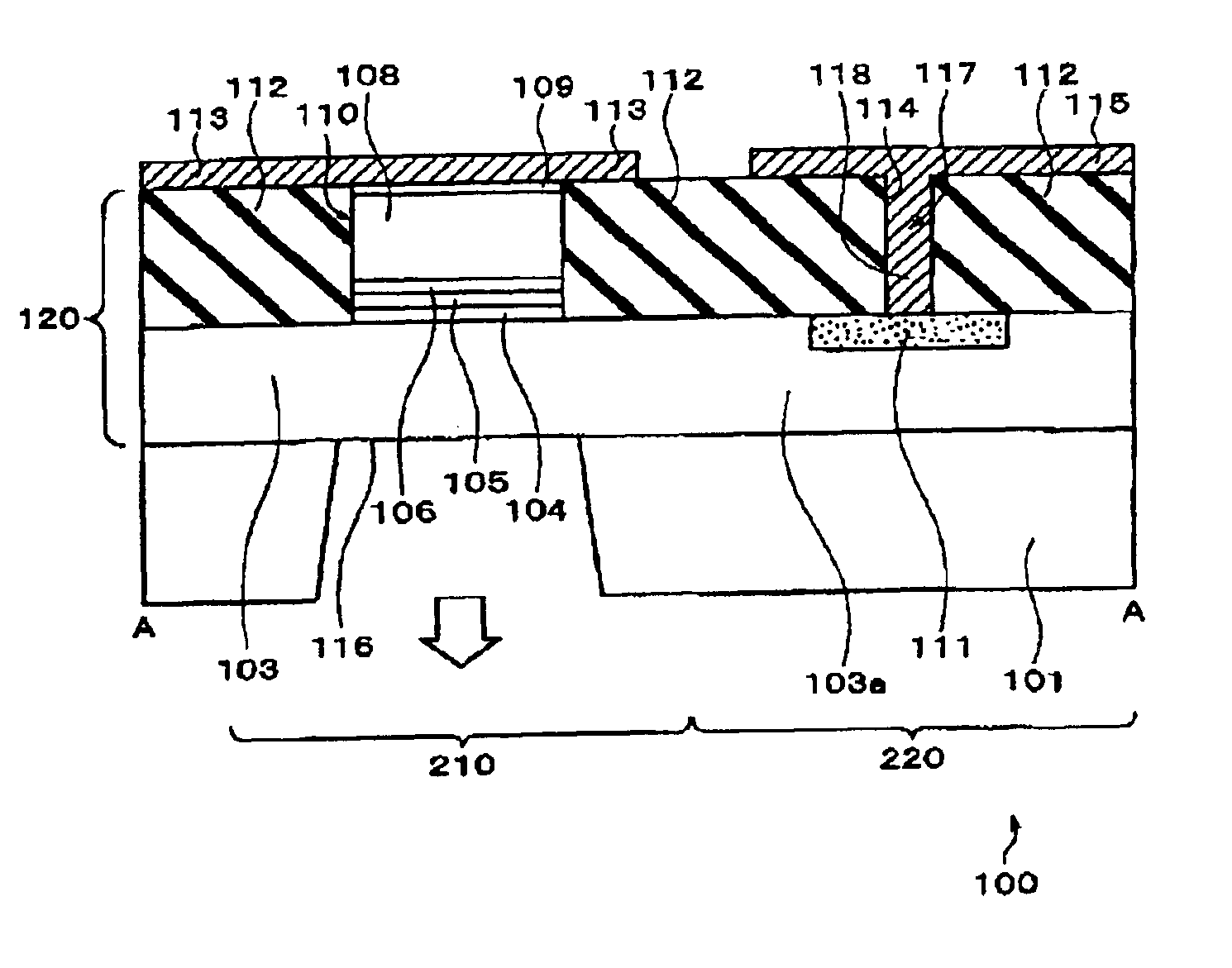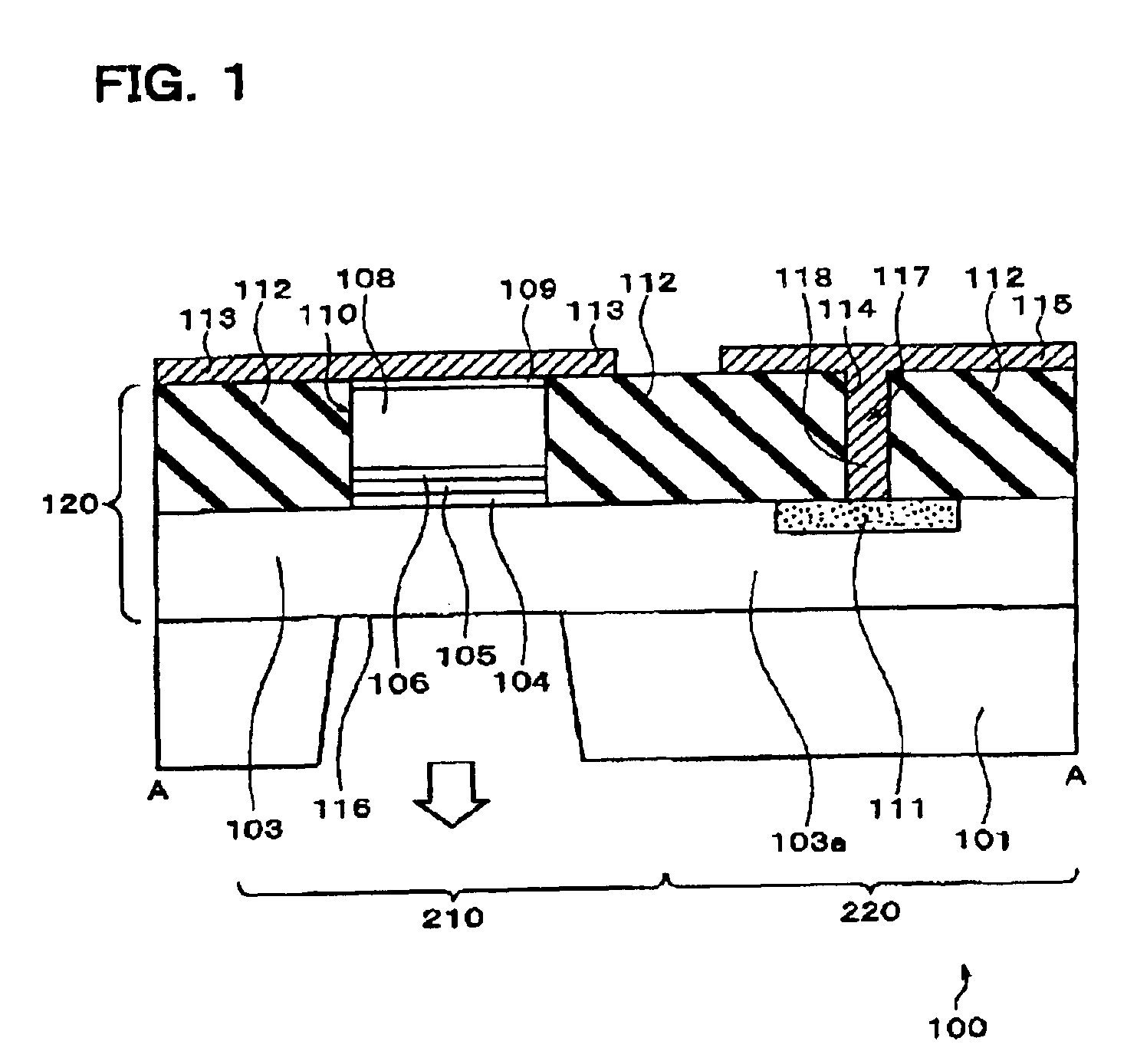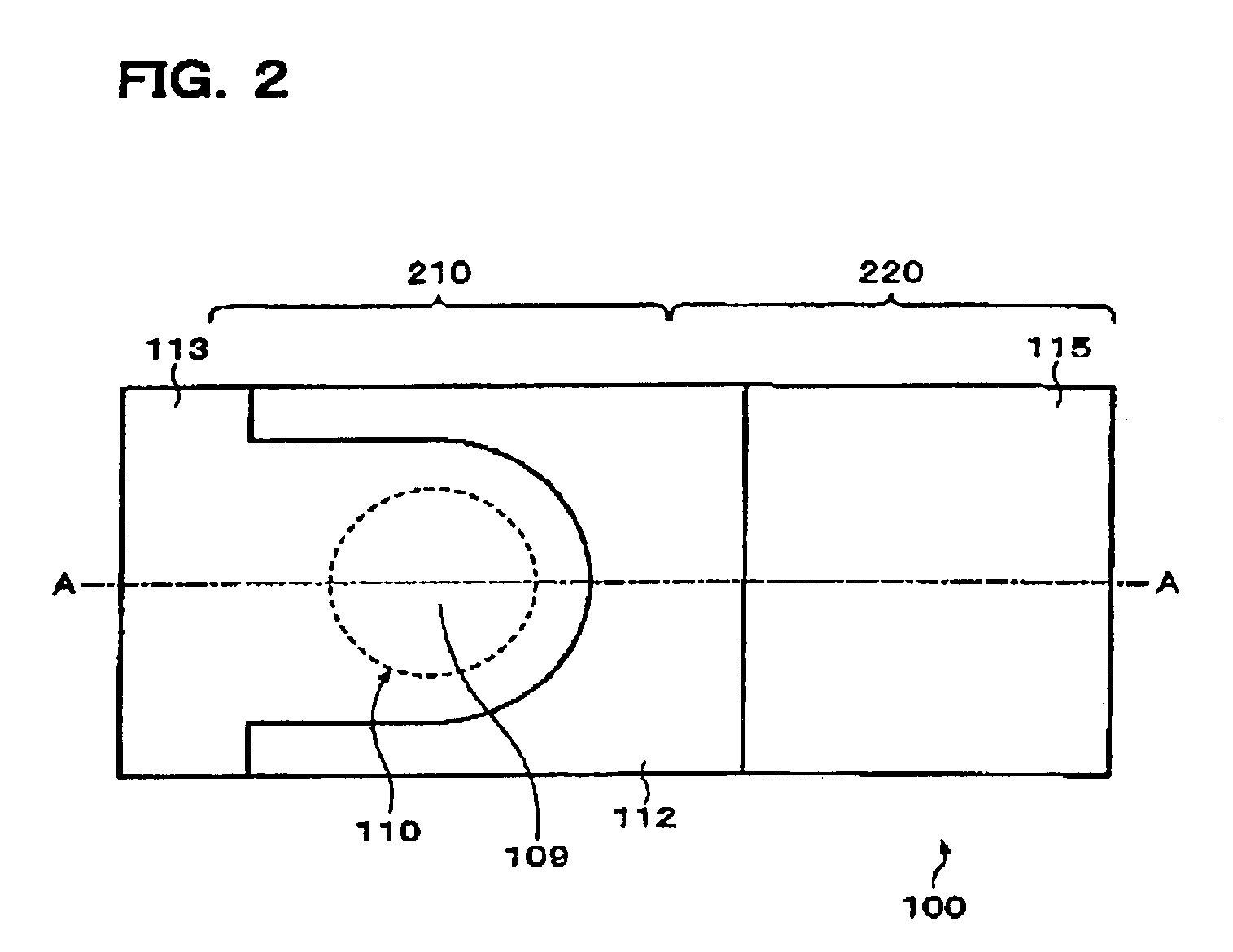Surface-emitting semiconductor laser and method of manufacturing the same
a semiconductor laser and surface-emitting technology, applied in the direction of lasers, semiconductor lasers, optical resonator shape and construction, etc., can solve the problems of interfering with the achievement of rapid drive or compact devices, and achieve the effect of excellent light emission efficiency, rapid drive and compact devices
- Summary
- Abstract
- Description
- Claims
- Application Information
AI Technical Summary
Benefits of technology
Problems solved by technology
Method used
Image
Examples
first embodiment
(Device Configuration)
First, the configuration of the first embodiment of the surface-emitting semiconductor laser 100 (hereinafter referred to as “surface emission laser”) of the present invention is described using FIGS. 1 and 2. FIG. 1 illustrates schematically a section of the first embodiment of the surface emission laser 100 of the present invention, and is a section taken along the line A—A in FIG. 2. FIG. 2 is a plan view schematically showing the surface emission laser 100 shown in FIG. 1.
The surface emission laser 100 is constituted by a light-emitting region 210 and a non-light-emitting region 220. In the light-emitting region 210, a resonator 120 is formed. The resonator 120 is formed on a semiconductor substrate 101, being for example a GaAs substrate. In this embodiment, the case is shown in which in the light-emitting region 210, in at least a part of the resonator 120 a pillar portion 110 is formed. The resonator 120 is formed by lamination in sequence of a buffer la...
first modification
(First Modification)
FIG. 8 is a sectional view of a first modification of this embodiment of the surface emission laser.
In the surface emission laser 100 shown in FIG. 1, the case has been described that the contact region 111 and second electrode 115 are contacted with the contact portion 117 interposed, but as in the surface emission laser 200 shown in FIG. 8, the contact region 111 and a second electrode 215 can be directly contacted without a contact portion interposed. Except for the fact that no contact portion is provided, and the portion of the insulating layer 212 formed on the first mirror 103 and the layer 103a linking to the first mirror 103 which is positioned over the portion forming the contact region 111 is removed, after which the second electrode 215 is directly formed on this portion, the surface emission laser 200 shown in FIG. 8 is obtained by a substantially similar process as the surface emission laser 100 shown in FIG. 1, and substantially the same effect and...
second embodiment
(Device Configuration)
Next, the configuration of a second embodiment of a surface emission laser 300 of the present invention is described with reference to FIG. 9. FIG. 9 shows schematically a section through the second embodiment of the surface emission laser 300 of the present invention.
The surface emission laser 300 shown in FIG. 9 differs in configuration from the first embodiment of the surface emission laser 100 in that an insulating layer 312 is formed to extend along the side surface of the pillar portion 110 and the top surface of the resonator 120. On the other hand, the surface emission laser 300 shown in FIG. 9 has, like the surface emission laser 100 shown in FIG. 1, the contact region 111 and a second electrode 315 electrically connected with a contact portion 317 interposed. Since other portions of the configuration are substantially the same as those of the first embodiment of the surface emission laser 100, for those portions of the surface emission laser 300 of th...
PUM
 Login to View More
Login to View More Abstract
Description
Claims
Application Information
 Login to View More
Login to View More - R&D
- Intellectual Property
- Life Sciences
- Materials
- Tech Scout
- Unparalleled Data Quality
- Higher Quality Content
- 60% Fewer Hallucinations
Browse by: Latest US Patents, China's latest patents, Technical Efficacy Thesaurus, Application Domain, Technology Topic, Popular Technical Reports.
© 2025 PatSnap. All rights reserved.Legal|Privacy policy|Modern Slavery Act Transparency Statement|Sitemap|About US| Contact US: help@patsnap.com



